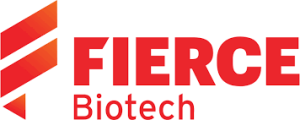By Maria Koblish
It’s no secret that launching a startup is a considerable risk that requires a lot of work. From product development to marketing to sales, executives have their hands full. In an ever-expanding tech-savvy industry, startup businesses must understand the vital role digital marketing plays in their success.
Digital marketing is essential for any tech startup to get off the ground. Digital marketing efforts can have a direct impact on the following actions:
- Increasing Brand Awareness
- Product Promotion
- Building an Audience
- Capturing Leads
- Acquiring Customers
- Sales
We have looked back on our work with leading tech companies and startups to ease this impending workload. Here are seven essential tips to help any tech startup with its digital marketing strategy.
1. Identify the Target Audience
There’s no better way to begin a list of digital marketing tips than here: defining the target audience. Step one of any business plan, marketing strategy, or PR activity starts with understanding who you’re speaking to. Start with generally defining — who is your audience? What are their demographics? Then you can get business-specific. How would this group benefit from your business? How would they research products online? How do they use social media?
Marketing connects a business to its intended audience and entices them to interact with its product or service. Once you define that audience, the actual campaign can begin.
2. SEO Optimization is Key
Keywords aid in search engine optimization (SEO) to pay-per-click (PPC) advertising; they act as the first step to bringing in target audiences and awareness to your startup. The more relevant the keywords are, the better your chance of bringing in that awareness and desired audience.
How do you determine those keywords? Google is a handy and free tool that many marketers use. Put yourself in the shoes of your target audience and search away, but pay attention to Google’s predictive text suggestions, aka the “people also ask” and the “related search” features.
Along with gathering the correct keywords to use, be sure to:
- Identify the funnel stage: Your keywords must differ for each potential customer at different sales funnel stages.
- Track existing similar content and keep your keywords organized: Don’t let two or more pages on your website target the same keyword because you will be competing against yourself, hurting your rankings.
- Collect branded keywords: This is geared toward PPC ads: target branded keywords in your marketing campaign to differentiate yourself in the digital landscape.
3. Monitor Competitors
While your competitors may seem like enemies, they can be your greatest asset. Here’s how to leverage their strategies for your benefit:
- Differentiate from competitors via messaging and content
- Review competitor case studies and learn what works for them
- Check their social media accounts to see what’s resonating with their audience
- Review the content they are publishing
- Identify their rank in terms of SEO, content, media coverage, and more
Everyone’s information is out there. You can use it to your advantage while maintaining the integrity of your business.
4. Maintain an Optimized Website
Google is the driving force behind website optimization. It works off of algorithmic scanning to assess the quality of content to provide the most relevant content to the user.
Google’s ranking system is activated by how long people stay on your site — the higher the quality, the higher the engagement, and the more optimized your site ranks in a keyword search. Knowing that makes it all the more important to play Google’s game and use the algorithm to your advantage. If you want to learn more about how SEO works, check out this blog post.
Maintaining a quality website not only makes your business look better to the customer, but to the search engine as well.
5. The Importance of Social Media
Today, globally, more than 4.74 billion people use social media. Your potential customers go on social media daily to interact with peers and favorite brands. It’s essential to position yourself through organic and paid social media as a key part of your audience’s online life. It will drive lead generation and create a sense of community.
6. Keep an Active Blog
Prioritize keeping an active blog on your company website. Offer personal findings oriented towards your business, tips and tricks, and general content to support your audience during their time on your site. Demand Gen Report revealed that 47% of buyers viewed at least three to five pieces of content before they engaged with a sales rep, making the content you post essential.
These blogs are a great asset on social media channels. Sharing blogs on Twitter, LinkedIn, etc., increases traffic to your website and creates a community within your audience. Blogs can also help you to rank for more keywords on search engines, garnering more activity and lead generation.
Staying on top of a blog on top of everything else that comes with launching a startup can be challenging, so getting all team members involved keeps the work dispersed and consistent.
7. Have a System to Track Results
It doesn’t matter how much work you put into your digital marketing strategy without one thing: analyzing the results. All the planning and execution in the world mean nothing without it. Ensure that you can measure the impact of your efforts on marketing channels like social media, email, search engines, and your website to track your startup’s growth. In another blog post, you can learn more about how UTM codes can help track results.
The complexity of launching a startup continues after digital marketing. But prioritizing these practices can simplify the process, setting your business up to welcome impressive success and growth.
0to5 Media Moments: April 2023By Maggie Markert
In our blog series, Media Moments, the Zer0 to 5ive public relations team highlights a variety of media coverage secured by the team on behalf of our clients every month. Check back each month to get a glimpse at the team’s ongoing work.
Public relations is a delicate art. While it may not initially seem that way from the outside looking in, it requires agility, creativity, deep knowledge of the landscape and journalists, and strategy. And, that’s exactly what we have at Zer0 to 5ive.
Day in and day out, our public relations team works diligently to build strong relationships with journalists and garner our clients placements that showcase their industry leadership, as well as their innovative products and solutions.
Here is a round-up of some of our team’s most strategic media hits during the month of April.
IGN for Sony AI

One of the primary jobs of a public relations team is to build the foundation that sets up a company and their subject matter experts as leaders in their industry. Over time, this can be done through proactive thought leadership pitching, contributed article placements, and company or product news.
The Zer0 to 5ive team has been working alongside the Sony AI team to generate awareness for the organization’s expertise in AI for gaming as well as its breakthrough autonomous AI agent, Gran Turismo Sophy (GT Sophy), to build that foundation through these steps. As a result, IGN secured inclusion of commentary from Sony AI’s Chief Operating Officer Michael Spranger in a roundtable article featuring other gaming visionaries. Read the article here.
Forbes for YouScience

There are tens of thousands of journalists in the U.S. alone, and each individual covers a different beat for the respective media outlets. It is paramount that public relations professionals understand the exact topics each member of the press focuses on as well as any intricacies of those topics. To gain an understanding of this, PR professionals must not only read articles from the individual, but also build a relationship with reporters that allows them to check in to see if their beat has changed over time due to external factors or current events.
A recent piece of coverage for YouScience with Forbes is a great example of this. For more than a year, the Zer0 to 5ive team has been nurturing a relationship with this specific journalist and his key focus area. With this understanding, the team was able to craft a story angle associated with the recent launch of YouScience® Brightpath – a first-of-its-kind technology that elevates educational relevance and engagement by helping educators and students plan individualized pathways – to secure coverage. Read the article here.
CIO Dive for Onymos
As we’ve previously shared in our last Media Moments post, most journalists find a story more shareable when it is connected to a trending topic. This hook could be a top awareness day or month, or a current event that has gained traction in the news cycle.
For Onymos, the Zer0 to 5ive team leveraged the highly popular and well-covered awareness day of International Women’s Day and Women’s History Month. The tie to these awareness holidays along with compelling commentary from Bhavani Vangala, Vice President of Engineering at Onymos, secured the company coverage with CIO Dive. Read the article here.
FierceBiotech for Greenphire

The ability to highlight innovation in any area of technology can be an exciting moment for all companies. From a media perspective, it can be a major generator of coverage as well as overall visibility and brand awareness.
Recently, Greenphire launched a new app called GreenSpace, which is a patient-facing digital platform that provides access to trial-related information and activities, including financial and travel itinerary details, surveys and insights. The Zer0 to 5ive team leveraged this innovation-related news to secure coverage from FierceBiotech. Read the article here.
Franchising.com for Chatmeter

Contributed articles (also known as bylines) hold a lot of power for companies looking to expand their thought leadership in a particular area. These articles, which are almost always vendor-neutral, enable companies to share the deep knowledge and expertise of their subject matter experts and business.
A recent piece of coverage for Chatmeter is a great example of this. The Zer0 to 5ive team pitched the background and expertise of Chatmeter’s President, Go-to-Market, Cynthia Sener, and garnered a placement with Franchising.com on her thoughts surrounding the impact of local brand intelligence on the success of franchises. Read the article here.
The Associated Press for CENTEGIX

Press releases are a tried and true method for disseminating information on a company, their products and services, research, and more. When distributed through a wire service, relevant, compelling press releases can have a wide reach and are helpful in driving awareness and visibility, generating SEO, and communicating important company news.
This AP article for our client CENTEGIX demonstrates the power of a press release. By sharing a press release on company sales momentum in the school safety market, Zer0 to 5ive secured an opportunity with AP for a timely story on the need for – and increased adoption of – school safety technology solutions. The interview and resulting article were picked up nationally by 550 publications, such as ABC News, Yahoo News, and U.S. News & World Report. Read the article here.
To learn more about how Zer0 to 5ive’s public relations team can help your company, visit our PR page or drop us a line.
How Boxing is Like Social Media – and How to Land Those Killer Blows with Outstanding ContentBy Patrick Reilly
Everyone is on social media. That part is obvious. And, it’s important to use social media to achieve your business objectives, and put time, energy, and dollars where consumers are. The bottom-line profits achieved from social media require hustle, heart, sincerity, constant engagement, long-term commitment, and artful, strategic storytelling.
Bestselling author and social media expert Gary Vaynerchuk outlines this elegantly and in simplified, digestible terms in his book, “Jab, Jab, Jab, Right Hook: How to Tell Your Story in a Noisy Social World.” He argues that social media marketers are throwing the best right hooks or knockout punches – and how most of the time they are still failing to land killer blows. The book is an update on what Vaynerchuk and his team have learned about successful social media campaigns through their work with thousands of startups, Fortune 500s, small businesses, entrepreneurs, and celebrities.
Social media is immediately gratifying and hugely addictive (look at TikTok). People using their smartphones are often using them to stay updated and entertained through social media. Most companies are still not getting the message. They may have Twitter and a Facebook page, but Vaynerchuk says that most of the content isn’t resonating. Social media has its own language and businesses need to learn it. People may be seeing brands’ social media posts, but when the content isn’t compelling, they scroll away, sometimes forever.
Put up your Fists When Strategizing for Social Media
Vaynerchuk argues that there’s a reason why boxing is considered a sweet science – it’s often compared to chess – it requires strategic thinking. The right hook gets the credit for the win – but the series of jabs that come before set you up for success. For marketing, there is no sale without the story and no knockout without the setup. The jabs are lightweight pieces of content that benefit customers. These types of posts make users laugh, snicker, ponder, feel appreciated, and escape. The right hooks are calls to action that benefit your business.
Vaynerchuk believes social media marketers are not setting up jabs as well as they should – specifically by perfecting distinct, native content throughout multiple social media platforms. There is a science to creating memorable, effective social media content. Perfect hooks require three characteristics:
- A simple and easy-to-understand call to action
- Perfectly crafted for mobile and all digital devices
- The respected nuances of social networks for making content
The book includes guidelines for creating relevant, valuable content that consumers will pay attention to and want to share. This type of content creates the brand awareness that can be critical to your next sale. Marketers should approach social media with the same intensity as boxers – to create better content. Boxers are observant and self-aware – which are the same traits of good storytellers.
The Characteristics of Great Content and Compelling Stories
Only outstanding content can cut through the noisy world of social media. Vaynerchuk shares social media content rules in the book that are still applicable today. Below are the “6 Characteristics of Great Content and Compelling Stories” from the book:
- Native Content – Crafted to mimic what makes a platform attractive – Companies often don’t take the time to learn about social media platforms’ native ways. Social media posts should blend with the platform’s natural offerings and tell stories that engage consumers on an emotional level. Don’t shove marketing content down consumers’ throats. Try to enhance consumers’ interactions with the platform and do not distract from the experience.
- Doesn’t Interrupt – Ads and marketing are supposed to make consumers feel something and act on that feeling. They shouldn’t affect a consumer’s experience on the platform or intrude on that experience. Ads need to be part of the entertainment.
- Doesn’t Make Frequent Demands – Jabs are ads that are informative, generous, funny, inspiring, and written for your audience – not yourself. The company needs to interact with people and needs to be human. They tap into the conversation and find shared interests with consumers by responding and reacting to what they are saying. They are building an emotional connection with jabbing which paves the way for the right hook. If the content is great, you won’t annoy your consumer. Skillful native storytelling increases the likelihood that a person will share content.
- Leverages Pop Culture – Generations are defined by their pop culture and content has to compete with all of it. Create content that reveals your understanding of news and issues that matter to your audience. Integrate content into a stream where people can consume it with other pop culture candy.
- It’s Micro – Think of social media content as microcontent – a tiny, unique nugget of information, humor, commentary, or inspiration that you reimagine every day. Businesses can create deeper connections with consumers and their brands’ communities when they use social media effectively. Every year – a social media campaign should be as simple as: jab at people all the time, every day, talk about what they are talking about, when they start talking about something different, talk about that instead, repeat, repeat, repeat.
- It’s Consistent and Self-Aware – Every post, tweet, comment, like, and share will confirm your business identity. Your microcontent will vary, but it must reflect who your brand is. No matter how you tell your story, your personality, and brand identity must remain constant too. When you are self-aware, you know the message and it’s easy to keep consistent. Creating microcontent is a way for a brand to adapt to circumstances and to the whims of your audience and a brand’s best chance of being noticed in a busy, disjointed, distracted world. When you create stellar content native to the platform – you can make a person feel, which makes it more likely to be shared with others and amplifies your message at a fraction of the cost of other types of promotion.
Vaynerchuk believes that the social media equation requires quantity and quality, but content for the sake of content is pointless when posts are out of touch or unimaginative. If your social media posts come off as straight-up promotions, they will be largely ignored by the public. Following these six characteristics to create great content can help you cut through the noise and land that killer blow.
How to Start a Podcast for Your BusinessBy Andie Levine
These days, everyone has a podcast – for a good reason! Over 464 million podcast listeners globally have over five million podcasts and 70 million episodes available at their fingertips. Popular topics include true crime, pop culture, and sports, but podcasts don’t have to be just for B2C audiences. Regardless of the industry, your audience is out there.
The benefit of having a podcast is similar to why your company should have a blog. Podcasts allow you to communicate your knowledge and expertise – and, most importantly – control the narrative. Podcasts are an opportunity to increase audience reach and engagement, enabling you to grow your community further.
Now that I have convinced you to start a podcast, here’s how you do it.
Step 1: Getting Set Up
Before climbing the charts, a few key steps help you set up. First, identify why you are starting this podcast; what are you trying to achieve? Goals include generating business leads, being recognized as an industry leader, sharing company news, and increasing brand awareness or promoting company culture and recruitment.
Then identify a theme or topic. Start with market research to survey the competition in your genre – you can search for similar topics in Apple Podcasts. What would your podcast be doing differently than your competitors?
After identifying your goals and theme, identify your podcast brand. Brainstorm a name and a catchy description; both should be clear, concise, and specific (you can run the name through a podcast name checker to ensure it hasn’t been used.) For its branding, you need a logo and cover art. Cover art should be 1400 x 1400 pixels, in JPG or PNG form, and under 500KB. You’ll also want to have graphics that can help support the podcast on social media. A theme song or introduction music can also help shape your podcast.
Finally, choose your podcast’s format: interview, co-hosted, educational, news recap, or some combination. Think about how long you want your podcast to be and how often you’d be able to record and share new episodes. For reference, 39% of podcasts release new episodes every 8-14 days, and 31% are 20-40 minutes long.
Step 2: Hardware and Software
While podcasts require some equipment, the setup can be kept reasonably simple. Here are a few key pieces of hardware you may have already available in your office.
- Microphones: A podcast microphone enhances audio quality and makes editing easier; less background noise in the recording means less editing on the backend. Note that USB microphones that can plug into a computer are the easiest, and dynamic mics (compared to condenser mics) are better for podcasting.
- Headphones: Wearing headphones prevents audio echo and bleeding, which preserves the integrity of the recording. Any headphones work well!
- Visual Recording: If you want to include a visual element in your podcast, consider investing in a camera. Options include a DSLR, webcam, or even a cam recorder. Along with a quality camera, consider a branded backdrop to help keep visuals consistent, and a ring light to help provide even lighting.
For your software suite, you’ll want to consider where you’ll record the podcast, how you will edit it, and where it will be hosted. Many options are available for each, all with various pros and cons. Here are a few of our favorites:
- Recording: Riverside.fm, Restream, Garageband, and Adobe Audition
- Audio/Video Editing: Descript, Audacity, and Alitu
- Podcast Hosting: BuzzSprout, Captivate, and Transistor
Step 3: Record and Edit
If you’ve decided to have guests on your podcast, schedule time to record and determine if they need hardware. This should include contact information for participants, recording do’s and don’ts, the episode topic and background information, interview questions, or agenda. Preparing a briefing book can also be helpful to prepare, even if you don’t have guests.
When it comes to the actual recording, we have a few tips:
Tips for Guests
- Check internet stability; close all other applications and tabs
- Turn all phones on silent; mute or pause desktop notifications
- Speak slowly and clearly; casual/conversational
- Repeat key points if needed; this can be edited in post-production
Tips for Producer
- Take notes of sound bites to use for social media clips
- Take notes of spots where there was mumbling, background noise, etc., to have the guests re-record that part
After recording, you can edit the episode in your editing software. Software like Descript can help edit out “um,” “ah,” and other filler words. Some other things to check for are removing background noise and balancing audio levels – often, these are automatic features that can easily be employed. There is when you’ll add intro music and edit the video, if necessary.
Step 4: Promote Your Podcast
Now that your episode is ready, it’s time to share it with the world! Ensure it has a catchy episode title and an episode description. You can also create a specific image or graphic to share with the episode. Then, upload your episode to a hosting platform, and if there’s a video, publish it to Youtube or Vimeo. Other ways to promote your podcast include your website, social media, newsletter, or e-blasts.
The U.S. has the most podcast listeners worldwide – your audience is out there. Contact Zer0 to 5ive today if you would like to learn more about how our team can help you launch and promote your podcast.

